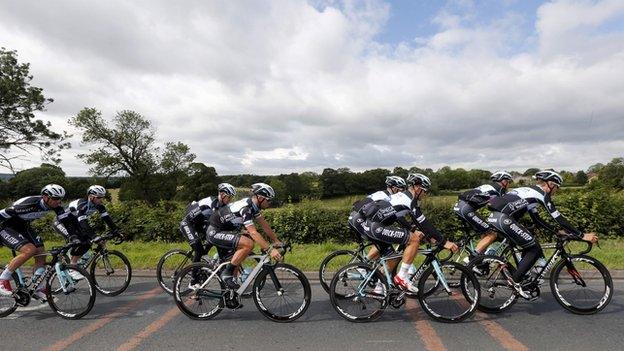Tour De France 2023: Everything you need to know
- Published
- comments
Watch a guide to the Tour de France
The Tour de France is the world's biggest annual sporting event.
Normally held in July, the event sees nearly 200 cyclists race over 2,000 miles in just 23 days.
While most of the race takes part in the towns, cities, countryside and mountains of France it also often starts in a foreign country.
And it's absolutely free to watch - you just have to get there early to beat the crowds and find a place to stand!
So do you know your yellow jersey from your polka dot? Your mountain stage from your flat?
If not, Newsround is here to help you enjoy this epic race!
What is it?
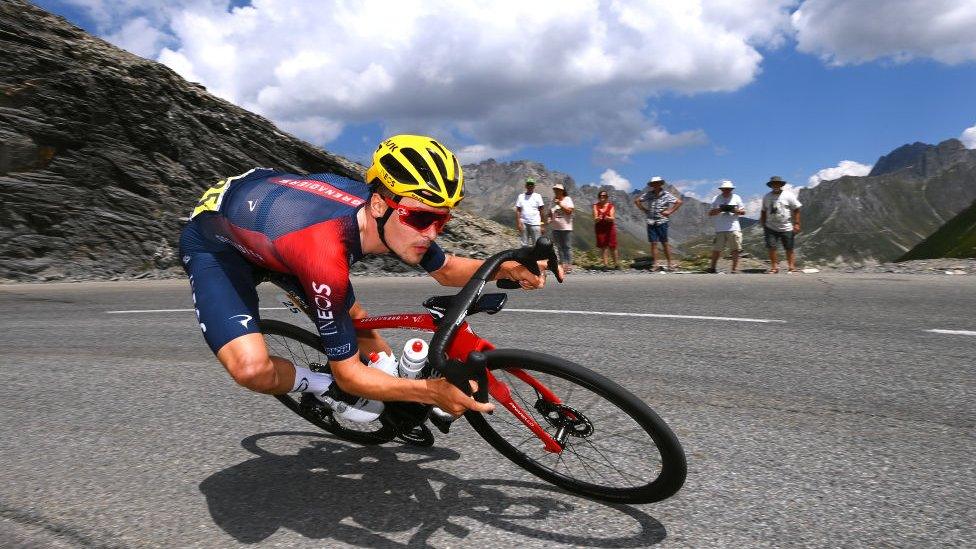
One of the stars of the 2022 Tour was young Team GB rider Tom Pidcock
Basically, it's a huge bike race around France!
Millions of people line the route that's made up of 21 stages raced over 23 days - that means they only have two days off to rest. Ouch!
Twenty-two teams from right across the world are involved in the Tour, with each having up to nine riders.
The riders average around 25mph over the entire course but at some points they'll go a lot faster than that, sometimes over 70mph!
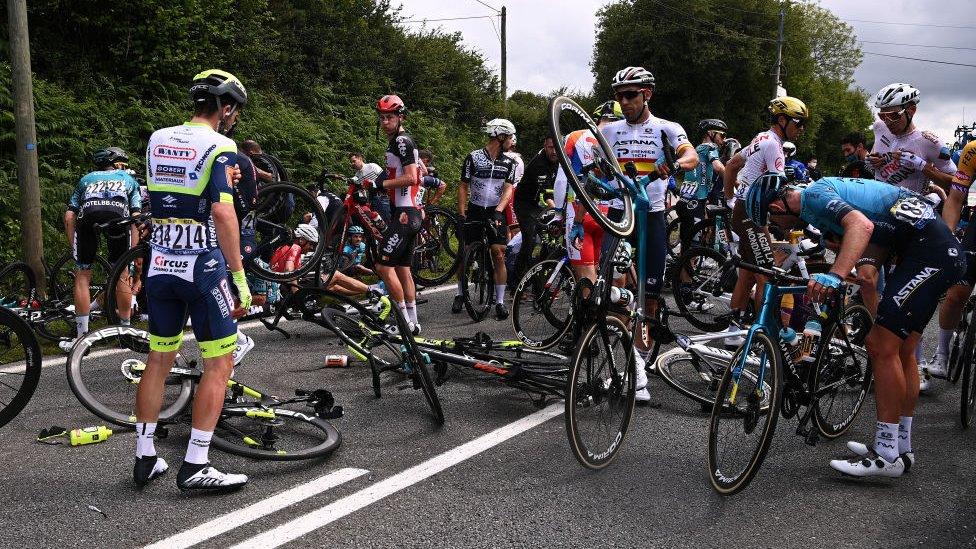
And high speed, there are sometimes spectacular crashes, but the race carries on regardless.
Every wondered why the riders are so thin? Well, it's fair to say it's a good way to keep fit.
If you finish the gruelling Tour, you could burn off up to 118,000 calories.
That's the equivalent of 26 chocolate bars per day!
Who is the champ?
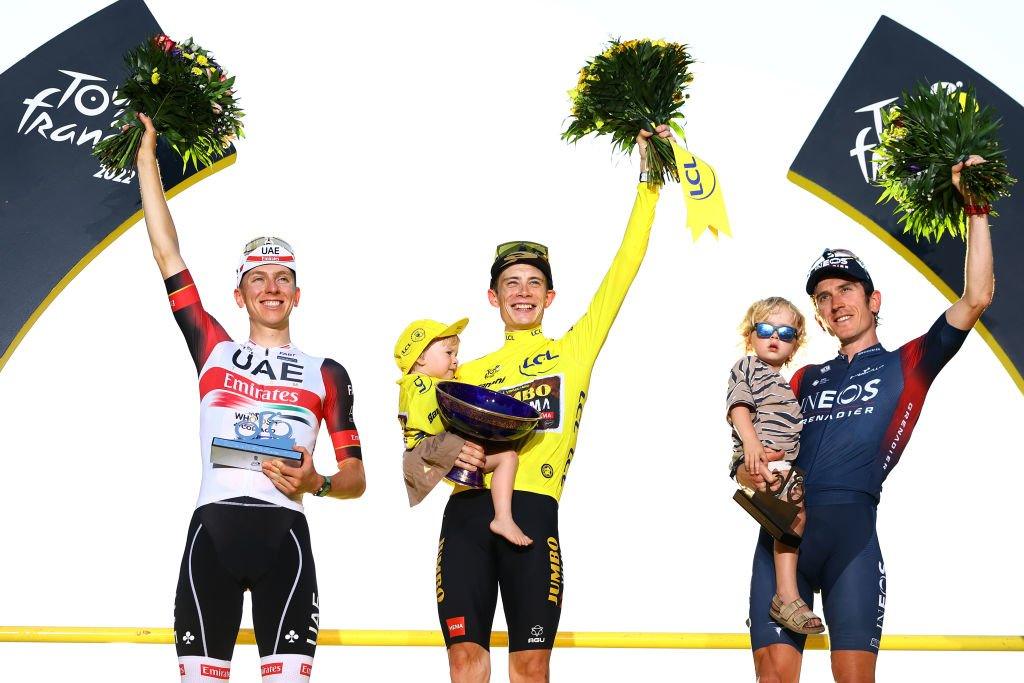
Tadej Pogačar, Jonas Vingegaard and Geraint Thomas
The reigning champ is 26-year-old Danish rider Jonas Vingegaard.
He won a dramatic Tour in 2022, beating his big rival - and the 2020 and 2021 champ - Tadej Pogačar.
The Slovenian cyclist became the youngest rider in 110 years when he won first the yellow jersey in 2020.
In third place last year was Welsh Olympic cycling legend and former Tour winner - Geraint Thomas. although he won't be taking part this in 2024.
What do the coloured jerseys mean?
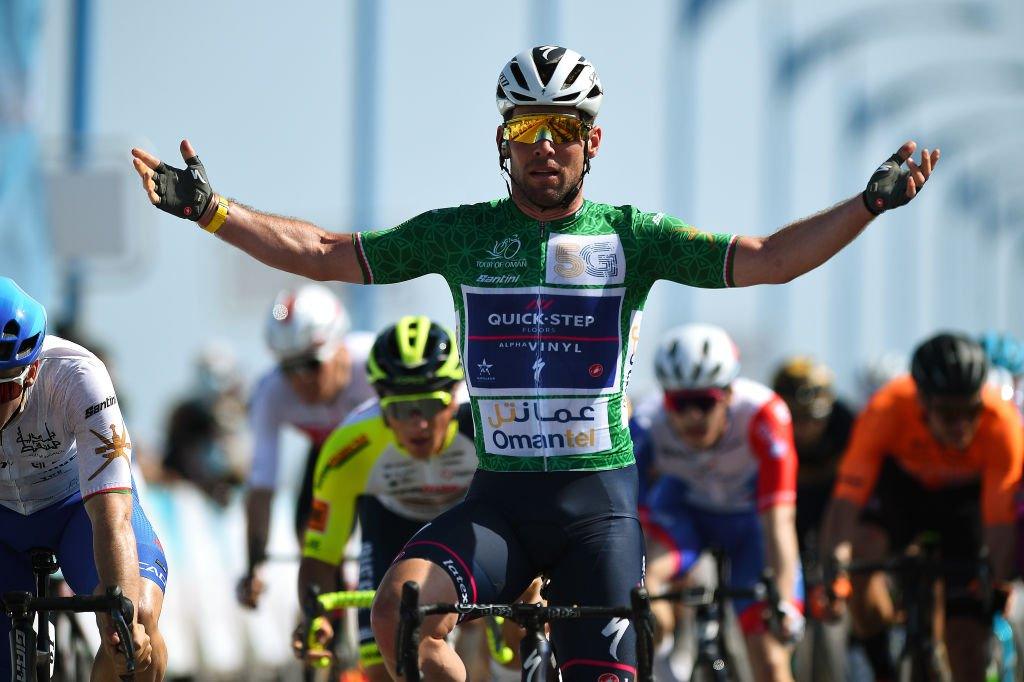
Isle of Man and Team GB star Mark Cavendish last won the green jersey in 2021
The Tour is like one big race with lots of smaller races going on inside it.
Riders might race for each stage win or to earn the right to wear one of the famous jerseys, which can change hands many times during the race:
The green jersey is the points prize. You get points for being one of the first riders over the line on each stage. It's usually won by a sprinter.
But the tour isn't just about reaching the highest speeds - it's also known for its uphill struggles. The riders climb thousands of metres up Alpine mountains, with the best rider on those stages winning a snazzy red and white polka dot jersey.
The white jersey is given to the best young rider - that's someone who's under 25 years old.
Martin finds out how tough the Tour is
But the prize everyone dreams of is the yellow jersey. Riders compete fiercely to even have the chance to wear it for one day during the race, let alone to be wearing it as the winner at the end.
If you are wearing the Maillot Jaune (Yellow Jersey) it means you are the overall race leader on total time since the start of the Tour.
Tour champions are often strong at everything - climbing, sprinting and time-trialling.
The stages
Meet the kids taking on the Tour's biggest cycling challenges
The race is broken up into 21 different parts or 'stages' and it isn't just flat roads. The Tour takes the riders up into the mountains too.
The different stages have different names:
Prologue: Each rider races against the clock in a short (usually under six miles) time trial.
Flat: Despite the name, it doesn't necessarily mean it's perfectly flat. Usually it's big packs of competitors riding together in a big group or 'peloton' for around 125 miles. These end in one of two ways - a 'breakaway' victory by an individual or small group, or typically with a hair-raising bunch sprint.
Time trial: A race against the clock. Similar to a prologue but a little longer. These are shorter stages of around 30 miles (as opposed to 100-125 miles). Sometimes riders do it by themselves, sometimes they ride as a team
Mountain: These come in all shapes and sizes, climbing from sea level to 2,000 metres sometimes more than once in a day. Tough!
So is it all about individuals?

A rider tucks fresh water bottles for the team into his pockets to give out to his team mates - but how many can he carry?!
No. It's a big team event but each team has a leader who is very important. The team leader is usually the strongest rider.
The other team members are traditionally called domestiques, from the French word for servants.
These riders work hard in every stage to protect their team leader.
They even have to go and fetch water for him (and everyone else) if he needs a drink and if he gets a puncture, they will wait while the team mechanic changes his wheel. Some even have to hand their bike over to him if he needs it!
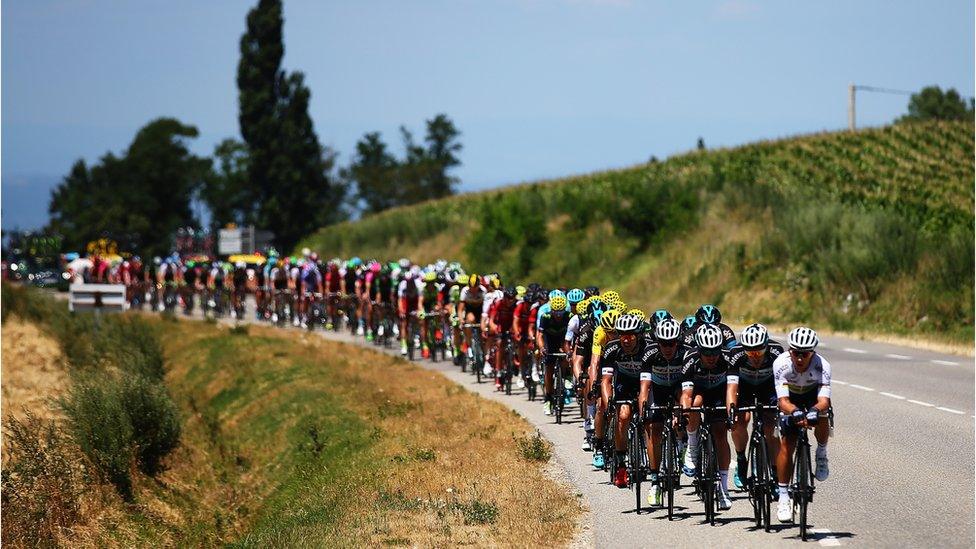
The peleton rides together as a group in formation
The star-man will ride behind his team mates - they protect him from the wind which makes it easier for him and he gets less tired.
Their reward is a share of the prize money and the glory of contributing to a successful team.
When the race is going on, lots of riders often ride in a big group called the peleton.
This is when they all ride together in formation to save energy - a bit like a flock of birds.
Does it only take place in France?
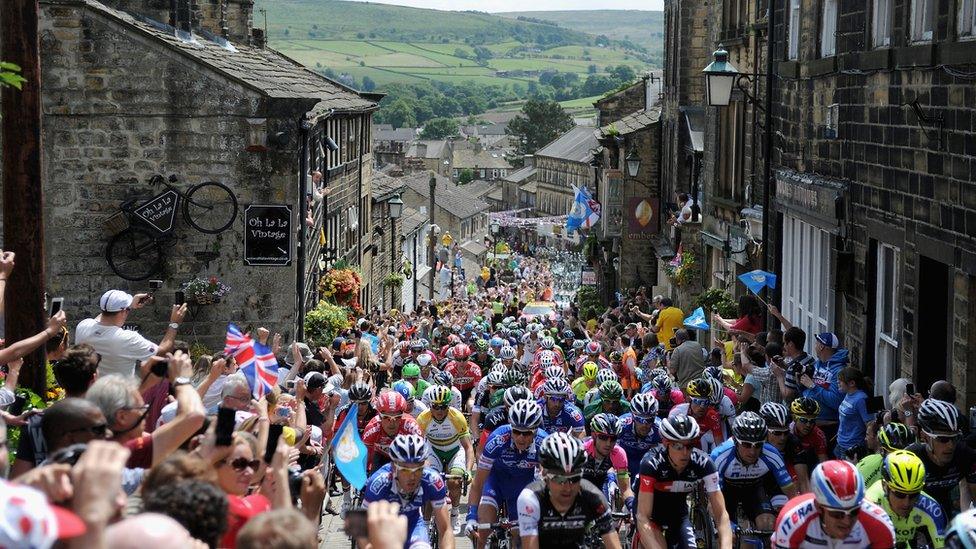
In 2014 the Tour De France had stages in Yorkshire. Here they are riding up Haworth high street!
No - it regularly nips into other countries that border France and sometimes the race even starts in another country.
The first two days of racing, the Grand Depart, are traditionally held in a new location every two years.
It was in London in 2007 and in 2014 the Tour started in Yorkshire. In 2023 it's in Bilbao in Spain.
Since 2014, Yorkshire has hosted its own cycling race inspired by hosting the Grand Depart, called the Tour de Yorkshire, which now takes place every year.
How did it start?
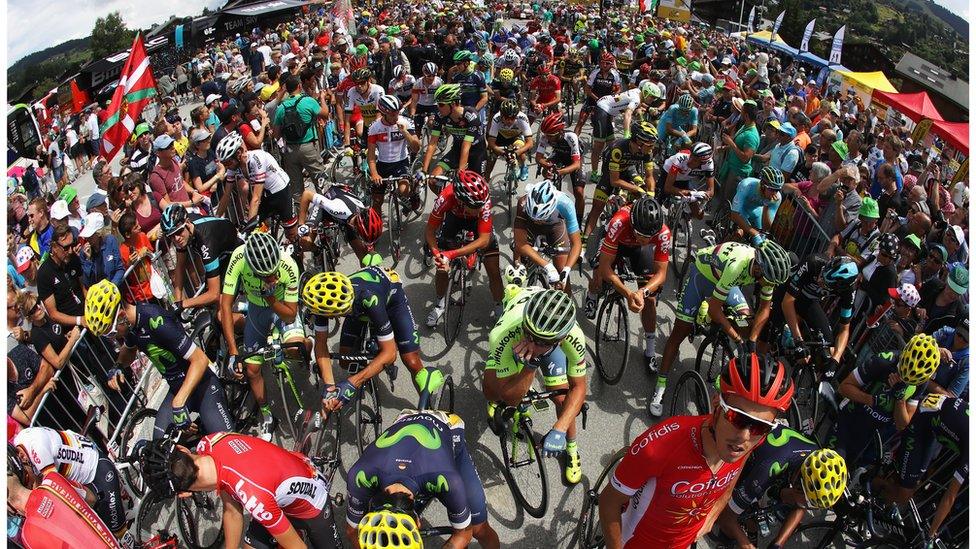
Is it the Tour de France or Where's Wally for cyclists?
The race was started by Henri Desgrange as a publicity stunt back in 1903.
He came up with the idea of a bike race around France in order to raise the profile of L'Auto, the newspaper he worked for.
The first race was a huge success with 60 riders covering an amazing 1,500 miles.
- Published29 July 2019
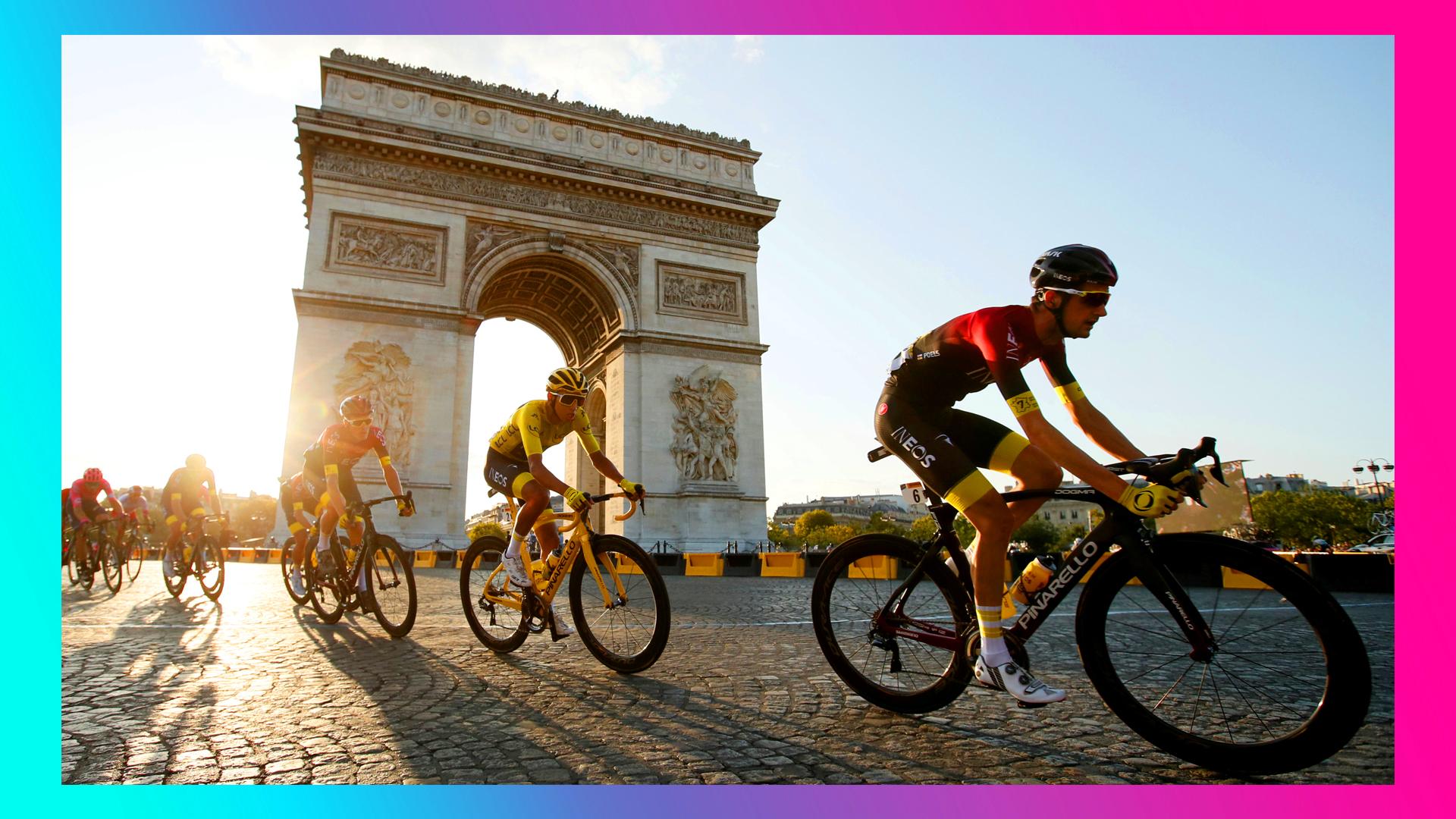
- Published19 June 2017
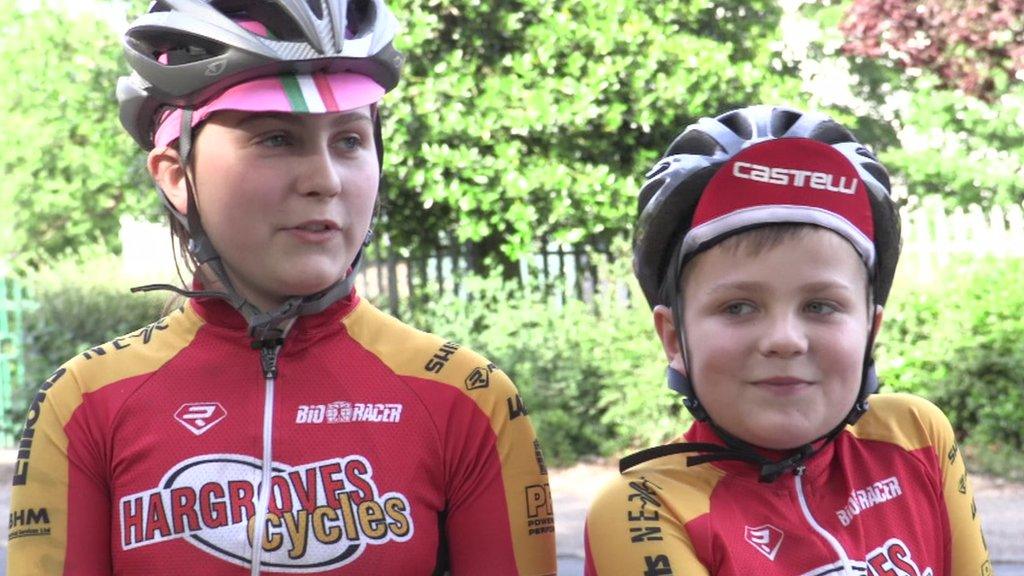
- Published28 April 2017
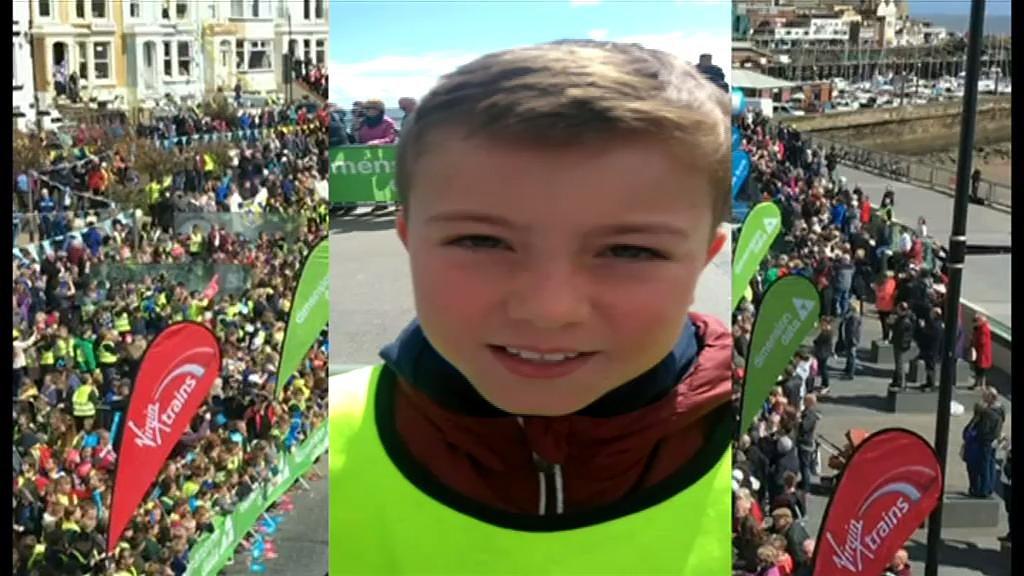
- Published4 July 2014
